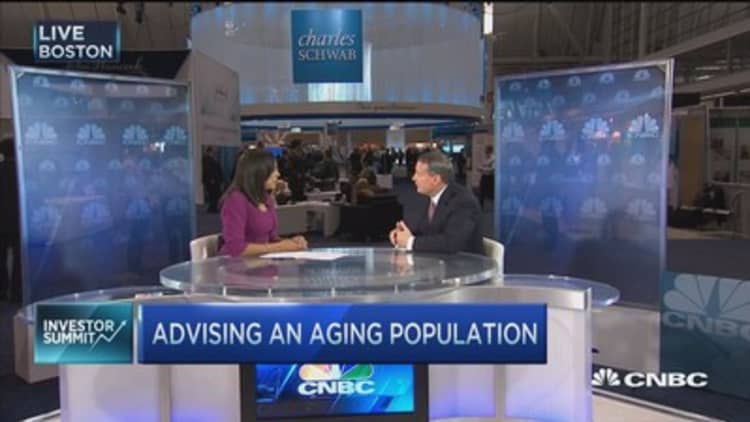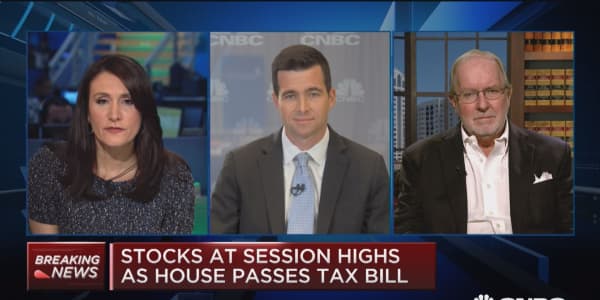
When it comes to their country, U.S. investors are loyal — sometimes to a fault.
In fact, the unwillingness of Americans to look beyond their borders for places to put their money could be their biggest challenge in the years ahead.
U.S. investors come in second place globally when it comes to nondomestic investing, with 77 percent of Americans keeping their money at home, according to Chuck Thompson, head of North American distribution at Henderson Global Investors. Only Canadians have a higher percentage of investors staying inside their borders.
Diversifying globally has been a major theme at this week's Schwab IMPACT conference in Boston, an annual event that brings together thousands of registered investment advisers and other pros to discuss trends.
Schwab's Jeff Kleintop, the firm's global investment strategist, used the acronym HOPE to describe how RIAs should approach their jobs, with the "H" standing for "home bias."
Read More Investors are 'really pessimistic': Schwab
"That's exactly the opposite of what they should be doing now," he said during a presentation.
Investors need "clearly to continue to diversify, to be globally diversified, to be conscious about exposure to developed markets, knowing there will probably be more opportunities in developed international markets than in the U.S." said Omar Aguilar, chief investment officer of equities at Schwab.
One of the big stories changing the investing landscape is diverging monetary policy.
The U.S. Federal Reserve has been ahead of its global counterparts, keeping its key interest rate near zero for the past seven years and pumping nearly $4 trillion in liquidity to the financial system.
Read More Blowout jobs report puts ball back in Fed's court
However, many expect the Fed to begin in December a long, slow process of rate hikes. That will come as others, such as the European Central Bank and Bank of Japan, will continue easing.
"More than 20 central banks have cut rates over the course of the year. You now get a situation where the U.S. is bucking that trend. It tends to drive the volatility that we've seen," Mark Hamilton, CIO of asset allocation at Oppenheimer Funds, said in an interview. "There are still opportunities, but we've become more cautious (on the U.S.). We've moved toward overweight on European equities, both from a macro backdrop on policy fundamentals and it's a little cheaper."
To be sure, there's little sentiment for excluding the U.S. altogether.
Schwab's position on U.S. equities this year has been "neutral," which merely suggests that investors keep only a normal allocation toward domestic stocks. In fact, exchange-traded funds that exclude the U.S. have performed poorly this year, with the Vanguard FTSE All-World ex-US fund down more than 5 percent in 2015.
But with the U.S. stock market, as measured by , up nearly 210 percent since the March 2009 lows but barely positive for 2015 and constrained by falling corporate profits, the price picture becomes more relevant.
Read More Why stocks are ready for a pullback
"I think it's just value," Henderson's Thompson said. "We've had such a U.S. run that left the rest of the developed markets outside the U.S. behind, if you believe in reversion to the mean, that's where we think the valuation gap will close."
Henderson runs two four-star offerings — the International Opportunity and European Focus — among its fund family, both with concentration on under-loved foreign stocks such as Roche, Deutsche Post, Nokia and Alcatel-Lucent, and posting strong returns in 2015.
"With acommodative interest rate policy outside the U.S., you can argue that smart investors will be looking at the replay effect," Thompson said. "It's probably a one-two punch."





